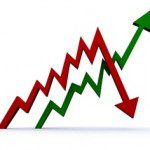Getting the inflation call right is one of the most important decisions an investor can make today.  This article explains how the U.S. inflation outlook is becoming clearer with the use of a number of charts.
This article explains how the U.S. inflation outlook is becoming clearer with the use of a number of charts.
The comments above and below are excerpts from an article by Rick Rieder (BlackRockBlog.com) which has been edited ([ ]) and abridged (…) to provide a faster and easier read.
Investing for the second half of 2016 will require balancing the risk of deflationary global impulses—from the waning of the commodity super-cycle to currency devaluation wars—against upward pressure in U.S. core inflation and stable, if unimpressive, economic growth.
The data highlighting which side in this battle will ultimately prevail inevitably are likely to sway back and forth, but I believe getting the inflation call right is one of the most important decisions an investor can make today. Inflation expectations are quite soft, and it’s important to consider such market-based inflation measures in any inflation outlook. The two charts below may be of help as well.
A continuing tailwind for inflation
We have seen an incredibly robust period of hiring in the United States, and even if payroll growth is likely to slow somewhat going forward, job gains have greatly outpaced total labor force growth over the past several years. As a result, there are numerous signs that firming wages are on the way, if not here already. Average hourly earnings rose last month at a year-over-year growth rate of 2.6%. Other recent wage growth indicators have also increased solidly, meaning an extended period of fairly anemic wage growth may have come to an end amid increasing labor market tightness.
One implication of stronger wage growth: a changing U.S. inflation picture. The chart below shows how stronger wage growth has supported core inflation lately. Looking forward, this trend is likely to continue, as finding qualified applicants for job vacancies becomes tougher in a tighter labor market.
Key drivers of core inflation are likely to grind higher
The U.S. inflationary environment should also continue to benefit from another important driver in coming months: The “low volatility” components of the core Consumer Price Index (CPI). These components, which have persistently trended higher, are key for driving the direction of inflation overall, as evident in the chart below. Their upward trend is unlikely to reverse anytime soon given that these “good inflation” categories are indicative of a solid labor and consumption environment.
Also adding to the reflationary picture [are] several transitory factors (such as motor fuel) that have served as inflation headwinds [that]are likely to shift to tailwinds, but what about relatively low market-based inflation expectations? They are understandable given that low money velocity has been a continual drag on economic growth, but I believe they may not fully reflect the dynamics described in the charts above. We could see them move higher if fiscal policy arrives to support and work in conjunction with its monetary policy counterpart. Of course, if we fail to see such a policy transition in the next couple years, stagflation would certainly become a risk.
In the meantime, for the first time in years, we are witnessing a cyclical improvement in inflation along with a solid consumption backdrop. I believe this foretells a reflationary environment ahead…
 munKNEE.com Your Key to Making Money
munKNEE.com Your Key to Making Money

